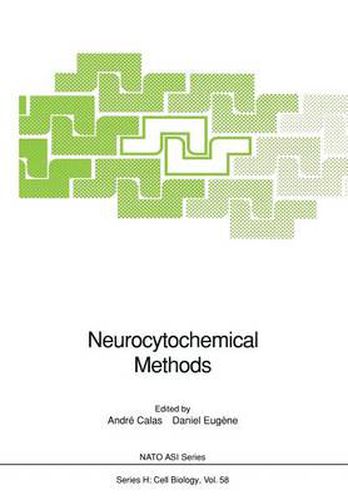Readings Newsletter
Become a Readings Member to make your shopping experience even easier.
Sign in or sign up for free!
You’re not far away from qualifying for FREE standard shipping within Australia
You’ve qualified for FREE standard shipping within Australia
The cart is loading…






This title is printed to order. This book may have been self-published. If so, we cannot guarantee the quality of the content. In the main most books will have gone through the editing process however some may not. We therefore suggest that you be aware of this before ordering this book. If in doubt check either the author or publisher’s details as we are unable to accept any returns unless they are faulty. Please contact us if you have any questions.
The great strides made in the field of morphological methods during the past decades have perhaps found their most spectacular expression in the functional exploration of the nervous system. In comparison with other tissues, nerve tissue displays three kinds of specificity : structural, because of the unique organization of the neuronal networks ; chemical as shown, for example, by the informative molecules exchanged between the nerve cells, and of course functional, thanks to the particular metabolic and electrophysiological characteristics of the neurons. Although for a long time the structural properties of the nervous system were generally considered to constitute the only field to which morphological techniques could be applied, we are to-day justified in believing that they can also explore the nerve tissue through its specific chemical and functional aspects, thanks to the development of immunocytochemistry and in situ hybridization, to the elaboration of the deoxyglucose method, to the use of voltage or ion sensitive dyes, and to the progress made in the application of in vivo techniques like PET. These methods have evolved so fast, the technical and fundamental problems they raise are so numerous and stimulating, and the importance of the complementary data they provide is so obvious, that we thought it was a good time to organize a new meeting between distinguished specialists in the neurocytochemical field.
$9.00 standard shipping within Australia
FREE standard shipping within Australia for orders over $100.00
Express & International shipping calculated at checkout
This title is printed to order. This book may have been self-published. If so, we cannot guarantee the quality of the content. In the main most books will have gone through the editing process however some may not. We therefore suggest that you be aware of this before ordering this book. If in doubt check either the author or publisher’s details as we are unable to accept any returns unless they are faulty. Please contact us if you have any questions.
The great strides made in the field of morphological methods during the past decades have perhaps found their most spectacular expression in the functional exploration of the nervous system. In comparison with other tissues, nerve tissue displays three kinds of specificity : structural, because of the unique organization of the neuronal networks ; chemical as shown, for example, by the informative molecules exchanged between the nerve cells, and of course functional, thanks to the particular metabolic and electrophysiological characteristics of the neurons. Although for a long time the structural properties of the nervous system were generally considered to constitute the only field to which morphological techniques could be applied, we are to-day justified in believing that they can also explore the nerve tissue through its specific chemical and functional aspects, thanks to the development of immunocytochemistry and in situ hybridization, to the elaboration of the deoxyglucose method, to the use of voltage or ion sensitive dyes, and to the progress made in the application of in vivo techniques like PET. These methods have evolved so fast, the technical and fundamental problems they raise are so numerous and stimulating, and the importance of the complementary data they provide is so obvious, that we thought it was a good time to organize a new meeting between distinguished specialists in the neurocytochemical field.